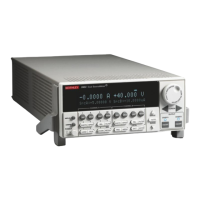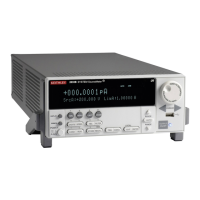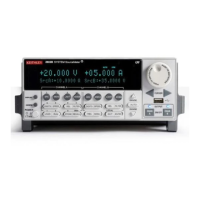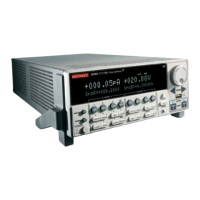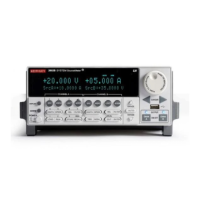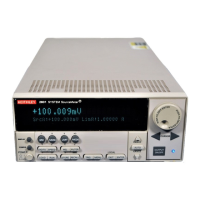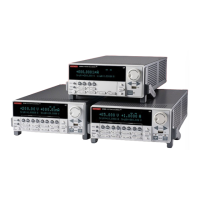2: General operation Series 2600B System SourceMeter® Instrument
2-40 2600BS-901-01 Rev. B / May 2013
Ohms programming example
The following programming example illustrates the setup and command sequence of a typical ohms
measurement procedure with the following parameters:
• Source function: current, 10 mA range, 10 mA output
• Voltage measure range: auto
• Voltage compliance: 10 V
• Sense mode: 4-wire
-- Restore Series 2600B defaults.
smua.reset()
-- Select current source function.
smua.source.func = smua.OUTPUT_DCAMPS
-- Set source range to 10 mA.
smua.source.rangei = 10e-3
-- Set current source to 10 mA.
smua.source.leveli = 10e-3
-- Set voltage limit to 10 V.
smua.source.limitv = 10
-- Enable 4-wire ohms.
smua.sense = smua.SENSE_REMOTE
-- Set voltage range to auto.
smua.measure.autorangev = smua.AUTORANGE_ON
-- Turn on output.
smua.source.output = smua.OUTPUT_ON
-- Get resistance reading.
print(smua.measure.r())
-- Turn off output.
smua.source.output = smua.OUTPUT_OFF
Ohms sensing
Ohms measurements can be made using either 2-wire or 4-wire sensing. See DUT test connections
(on page 2-48) for information on connections and sensing methods.
The 2-wire sensing method has the advantage of requiring only two test leads. However, as shown in
the following figure (2-wire resistance sensing), test lead resistance can seriously affect the accuracy
of 2-wire resistance measurements, particularly with lower resistance values.
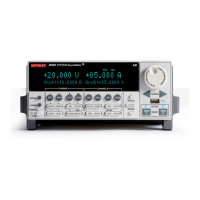
